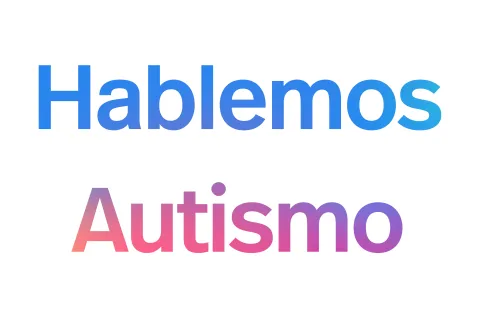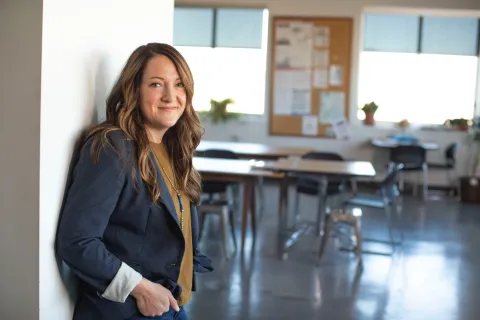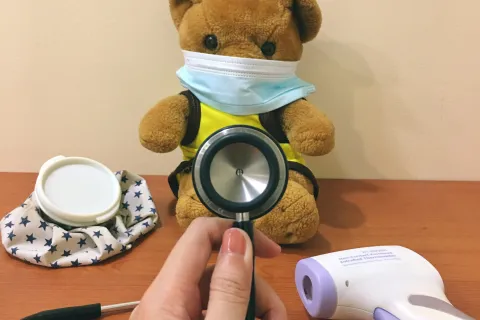Four ways to reduce stress when it's time to head back to school

The post below is from school psychologist Dr. Peter Faustino, Northeast Delegate to the National Association of School Psychologists (NASP) and former member of the Autism Speaks Family Services Committee.
The summer can be an opportunity to recharge and break from school routines, which is why September is often viewed as a mixed blessing. Parents of children with ASD are always trying to plan and prepare ahead of time. Unfortunately, we can’t account for every detail but here are a few tips for reducing the stress associated with back to school.
Tip # 1: Say Hello to the School Again
Greetings are such a big focus of the work we all do with children on the spectrum. And yet, it is the very thing we sometimes take for granted ourselves. Make time to meet and greet the key people in your child’s school for the upcoming year. Regular communication with the school is essential, so be sure to say hello again.
Start by seeing if a school professional can help you with just the little things at first: a visit to the school before it opens, practicing the combination of the lockers, a schedule of the times that things will happen at school, or some guidance on the key things to be learned in that year. It is best to start with small requests before you ask for the big favors as the year progresses (things like helping with the school bus, setting up some peer buddies, or managing a bully).
Once you find a school professional that is a good listener then you can begin to explain the nuances of your child. Help them understand who your son or daughter is beyond what can be gleamed from an IEP.
Tip # 2: Begin the Adjustment
Try to adjust your child’s environment to resemble the back to school schedule. Start by highlighting a calendar to show your child when school starts. Then begin to adjust your bedtime and morning routines slowly so that they mimic the school schedule. This will help you avoid a September shock.
Even if your child wakes, gets dressed and then falls asleep again – the rehearsal of the morning routine should save you stress when the first day arrives. Also try to plan lunch and snack time activities similar to the school schedule. If your body physically adjusts, then it will be easier to adjust emotionally as well. Think of it as jet lag for school – you will need a few days or weeks to completely acclimate, so start now.
Also, if there is time, select some educational topics that your child might be covering this year. Whether it be the IEP goals that will be addressed or some ‘curriculum’ related topics. Exposing your child to these things ahead of time can be of great benefit. Just don’t get frustrated or upset if your child is having difficulty at first. The learning curve is the steepest upon first exposure, so just remind yourself that you are making the task easier for when he/she starts school – there is no need to master the activity in August.
Tip # 3: The Schoolyard Hook
All developmental age ranges and genders have what I call a “Social Skills Hook.” This is something or several things that other boys and girls are interested in that your child can use as a connection to others. Opportunities are everywhere but we need to maximize those windows of social connections. While most children with ASD have varying degrees of restricted interests, you can still find a way to meld their particular interest into something social - then you have the hook.
If possible, visit the playground or recess area of the school (if it is a high school then the cafeteria or commons area where young adults hang out), to practice and rehearse the hook. If you are having a hard time finding a connection to peers then ask one of the school professionals for some guidance. They can sometimes facilitate an interaction and then offer you some advice on the best ways to maintain those interactions throughout the school year.
And finally...Tip # 4: Stay Positive
Living with autism can be overwhelming; it is all too easy to think about past trials and worry about ‘another’ school year. Back to school is an adjustment for everyone in the house, especially caregivers. But you can keep up hope if you stay optimistic. Find something that your child can look forward to and become excited about in September. This might help associate change with something positive. If you look for strengths then you will see what is possible and perhaps you just might recognize something that wasn’t there before…a learned skill, a different smile, or a new friendship.








